-
The Dark Period
- The Body Clock
- The Dark Period
- Scheduling the Dark Period on Polyphasic Schedules
- Quiz 1
- ULTIMATE Light Filtering Calculator
- Products
- Software
- Issues with the Dark Period & How to Overcome Them
- Using Three Noons to Determine the Timing of Your Circadian Rhythm
- The Nervous System: An In-depth Explanation Why Certain Activities Should be Avoided
Scheduling the Dark Period on Polyphasic Schedules
Scheduling the Dark Period on Polyphasic Schedules
Introduction
This part will focus on a few key concepts:
- How to schedule dark periods around polyphasic sleep schedules?
- How should you build the specific schedule groups with the dark period in mind?
- When is the ideal timing for the dark period?
The key goals
- Your 1st goal is at least keeping an uninterrupted dark period for 6-12 hours no matter your polyphasic schedule. To be even more specific, 8-10 hours is optimal.
- You want to wake up from sleep when ending the dark period. This is because it is much easier to wake up with the assistance of bright lights. Since you can not use bright lights in the dark period, that is the best solution. Because of this, you want to time it so that your dark period ends at the end of a nap/core, depending on the schedule.
- Not all schedules need the dark period to end at a nap, so be mindful.
One sleep-related perk is that it is much easier to fall asleep when you are in the dark period. Because it is harder to stay awake during this time, the length of the dark period needs to be balance to optimize your polyphasic adaptation.
For example:
A 10-hour dark period affects your productivity because it ends in a nap. You can shorten the dark period to 8 hours, but you will lose the sleep advantage in the nap.
- The third goal is to start the dark period around 1-3 hours before our slow-wave sleep core. Melatonin is important for entering slow wave sleep. In addition, having a dark period before sleeping can produce sufficient melatonin.
- A safe number to go for here is starting the dark period 2 hours before the core.
In summary, there are three key concepts for optimal dark period:
- Lasts 8-10 hours.
- Ends when we wake up from sleep in specific schedules.
- Starts 2 hours before the SWS core.
Along with the three key concepts, we will now fit each schedule type with the right dark period.
Biphasic schedules
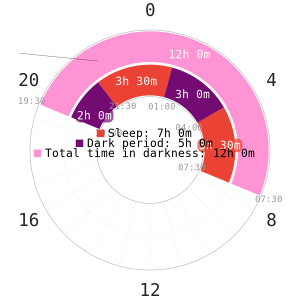
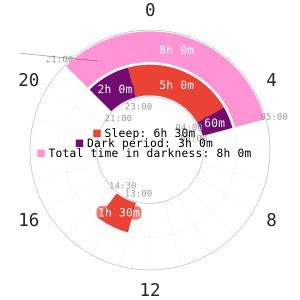

The first schedule line we will go through is the Biphasic group (Segmented, Siesta, Everyman 1).
1. Segmented – The dark period should span between the cores, with a total of 12 hours. However, that is not a problem.
If the gap between the cores is longer than 3 hours though, cut the dark period earlier.
2. Siesta – You want the dark period to last until an hour after waking up from the core.
3. Everyman 1 – The dark period should start before the core.
From here on, we will only provide general scheduling guidelines because it is too long to list every possible variation.
Everyman schedules
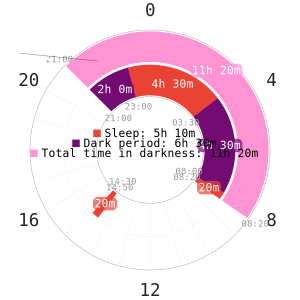
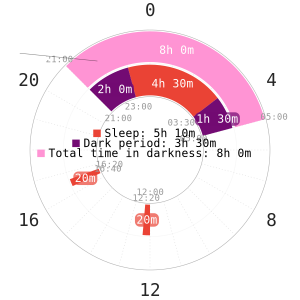
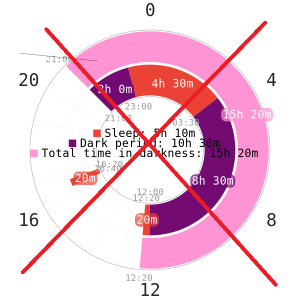
- If your first nap is close to the core, extend the dark period until the end of the nap. Do still keep in mind that the optimal duration is 8 to 10 hours of dark period.
- If you are on an Everyman 2 schedule, with the first nap at noon & a core starting at 11 pm, you really do not need to have the dark period cover all that length. Just cut it shorter in that case (See the second Everyman 2 picture).
Dual core schedules
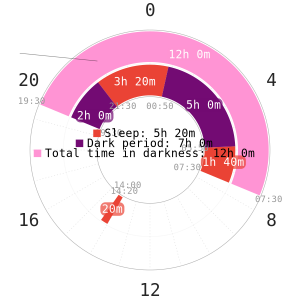
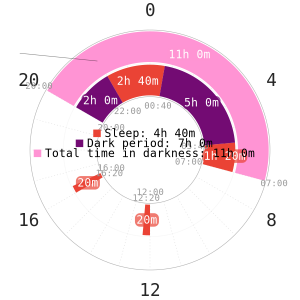
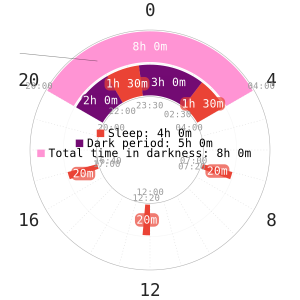
- In the Dual core line, you want the dark period to span the whole core gap, although there is a limit to this as well.
- If your cores are within 5 hours from each other, do a dark period that spans through the core gap.
- Cut the dark period early If there is more than 5 hours wake gap between each core. This varies for every different schedule, so do not overdo or underdo the dark period.
Tri core schedules
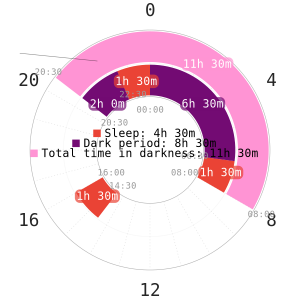
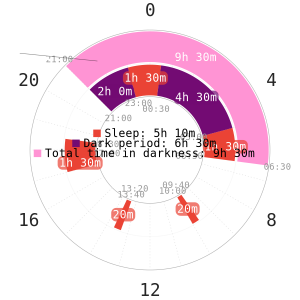
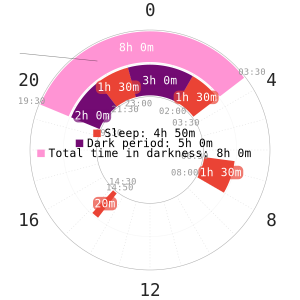
- On Triphasic, you want to cover the gap between the night and dawn cores with the dark period.
- On Tri core 1 and Tri core 2, you want the dark period to cover at least 2 cores. Whether you cover 3 of them depends on your specific scheduling variant.
- As always, strive for a dark period length of 8 to 10 hours.
Nap-only schedules
With these schedules, you can look at applying a dark period in two ways.
- One option is to do a long-term nap-only schedule
- Another option is to do it for a short-term.
If you choose the first long-term option, definitely do a dark period. For the second option, you can leave it out if you do not care about bad health effects.
Planning to do a gradual adaptation method or exaptation method to transition to another schedule directly after? You should definitely do the dark period.
When would the ideal dark period take place?
- If you plan to do a gradual adaptation, do the dark period at the same duration & time as your desired end-schedule.
- You can align your dark period with the local day-night cycle of your country to have a fixed circadian rhythm.
- If you live near the poles, it is important to understand that the day-night cycle will be unstable.
- You might experience no sun during the winter or have no darkness during the summer. To fix this, just apply an artificial dark period and use it throughout the year.
- It is also important to get sufficient photoperiod time. If you cannot afford this because you live near the poles, purchase a daylight lamp for the circadian morning.
More information on determining the exact shift of your circadian rhythm will be available further into this course. Stay tuned.
Leave a Reply
You must be logged in to post a comment.

Hmm, I wonder why it says ‘Enroll’ for course & a lock symbol even though I clicked on enroll
You would need to create an account on the website to view everything. If you don’t want to do so, you can see the abbreviated version in the Overview tab.